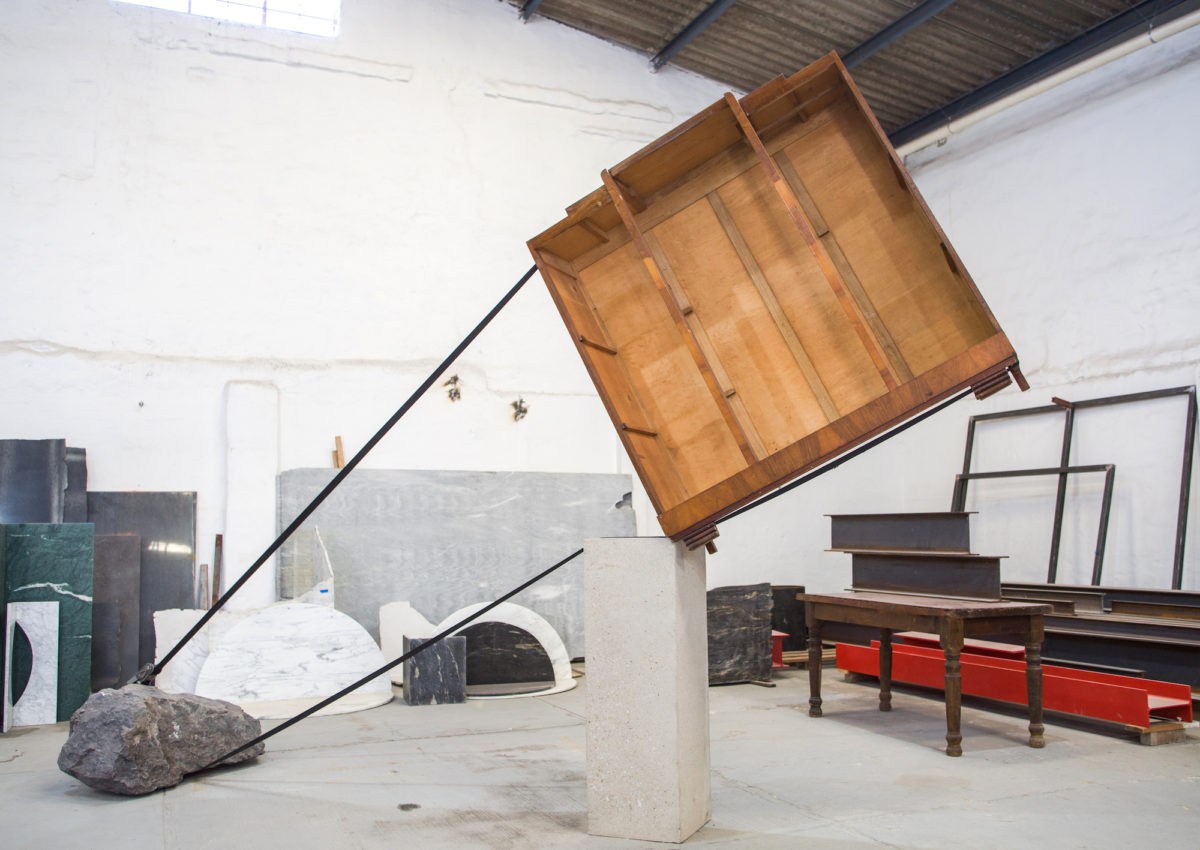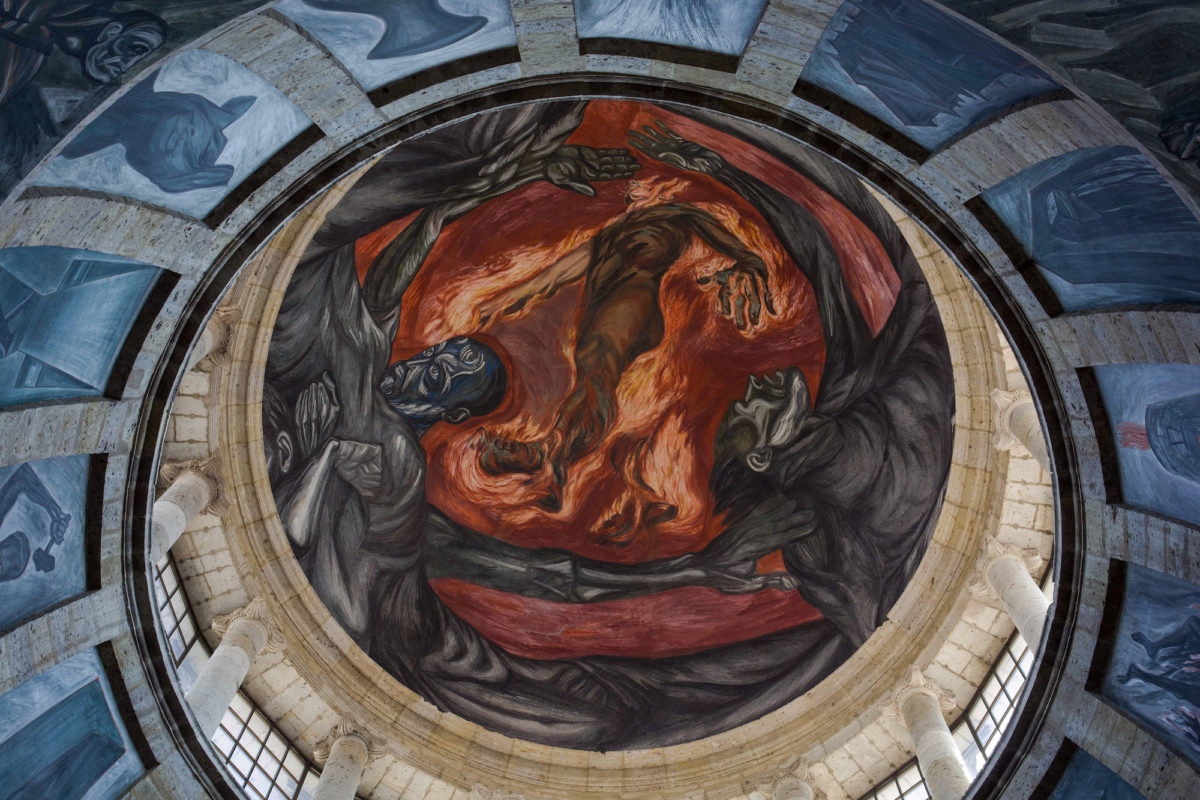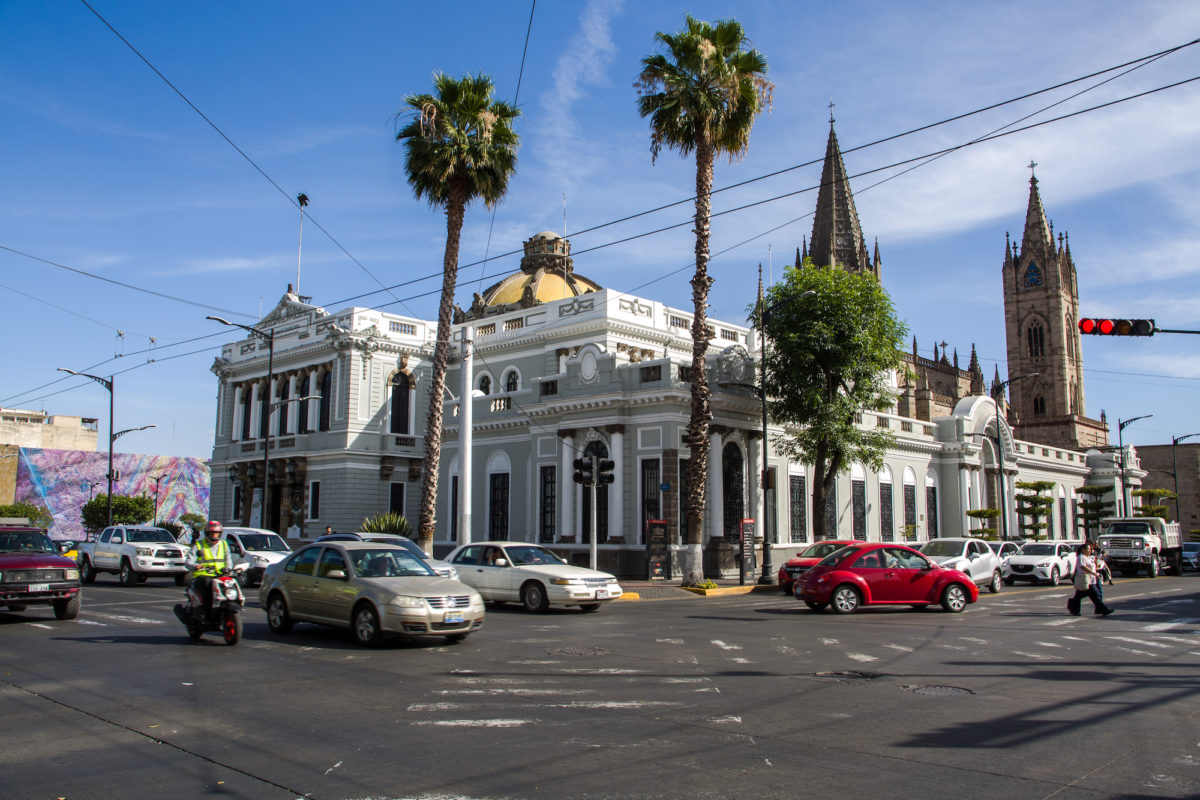Even as a visit to Mexico City has risen to the top of everyone’s bucket list, Mexican culture, particularly the fine arts, has historically been underestimated. But now that Guadalajara is rapidly joining the ranks of the capital as a cultural hotspot, the world is beginning to pay attention for all the right reasons.
A few steps onto the tarmac upon landing in Guadalajara, and I smell smoke. Not the smoke of burnt rubber and exhaust; the smoke of wildfire. The smell triggers a soft panic in my brain as I flash back to distant memories of evacuations and dark, ash-laden clouds from my childhood in San Diego, California, where fires would periodically sweep through the dry landscape, claiming homes, and sometimes lives. Once I arrive at my hotel on one of the more residential blocks of Colonia Americana, my suspicions are confirmed: There had been a fire earlier in a valley behind the hills on the horizon. It’s since been contained, and altogether sounds pretty nonthreatening, so I put it out of my mind.
In the flooding sunlight, anything could pass for a work of art.
Luckily for me and my anxiety, Guadalajara proves to be a city full of distractions. Though it’s significantly smaller and less grand than the country’s capital four hours south, local photographer Gaal Cohen, my guide for the trip, opines that Guadalajara’s artfulness lies in the small, quiet details. “This city requires changing your perspective slightly to appreciate its beauty.” I agree with him, admiring the way citrus trees grow tall on narrow streets lined with squat urban homes, and near-empty cantinas play Mexican radio faintly through wide-open doors and windows, disrupting the stillness of the mid-afternoon air only slightly. In the flooding sunlight, anything could pass for a work of art—even candy wrappers and food scraps on the street look like muses. But real Art—the kind that hangs in galleries, the kind people buy—is abundant here, too, and it’s this art that I’ve traveled to see.
I’m in Guadalajara for the PreMaco arts festival, an event that began only three years ago as a precursor to Mexico City’s much larger Zona Maco festival. Started in 2003, Zona Maco draws roughly 66,000 people from around the world every spring to swoon over the capital’s ever-expanding arts and design landscape. And though PreMaco has been somewhat overshadowed, it has recently grown into a destination for art lovers interested in exploring beyond Mexico City’s bustling boulevards, in a part of the country that falls squarely between the allure of Mexico’s past and the promise of its future.
The artists I meet in Guadalajara are evidence enough that Mexico is truly a “cultural superpower.”
Guadalajara is in the state of Jalisco, considered by many to be the “most Mexican” state. It is, after all, the birthplace of tequila, mariachi, and the rodeo-like sport of charrería, which have all come to define Mexican culture to those who imagine Mexico as some combination of a Disneyland and a giant 99¢ store. But Guadalajara-born sculptor Jose Dávila rejects the pigeonholing of his country by what he deems the “folkloric and festive peculiarities of the Jalisco tradition.” He notes the obvious: that “Mexico is a vast and diverse country,” and that what is characteristic of Oaxaca won’t be characteristic of the Yucatán Peninsula or the northern states. And even though the country has “always been very connected to the arts,” as Dávila says, listing off greats like Frida Kahlo and Juan Rulfo, and even with everyone’s collective drooling over the capital city, it would appear that Mexico’s membership card to join the world’s artsy elite was lost in the mail. But the artists I meet in Guadalajara are evidence enough that Mexico is truly a “cultural superpower”—a term used by Regina Pozo, the founder of Mexican design house Txt.ure—with or without that approval. And Guadalajara’s unique cultural context is essential to this designation.
Over pulpo tacos at Puerco Espada in a shopping mall called Andares, Guadalajara-based muralist and painter Rocio Saenz and I discuss the history of the city in excited Spanglish. “You have these very conservative ways and styles of life; it’s one of the more Mexican cities in México, no? It’s the Mexican city. ¿Cómo se dice ‘arraigada’? It’s traditional. Strong. Rooted,” she says, adding that the conservatism naturally led to a counterculture of artists and, as she puts it with a grin, “hippies.” “There is a lot of experimenting and open ways of thinking, and the creative people here always question the social, the political, the everything,” she says. “I think this mix of people is why this society is very rich and has a personality.”
A “reverse migrant”—someone who comes from the U.S. to Mexico in search of better opportunity as an artist.
The “mix” includes both local and international artists, who have come to show their work in Guadalajara, where the arts community is exceptionally welcoming of outside voices. Páramo Galería, opened in 2012 by Roberto Hemuda, is a stronghold of internationalism. During my visit, “New Suns,” a show from Japanese-American curator Kris Kuramitsu, is on view, featuring the works of nine women artists who are based in the U.S. but come from elsewhere, including Mexico, Israel, Iran, Abu Dhabi, and Nigeria. Themes of the works vary as vastly as the countries these women represent, ranging from camel racing in the Middle East to black maternal death rates in the United States.
Occasionally these international artists stay for good, like Los Angeles-born ceramicist Eduardo Sarabia, whose parents are from Sinaloa in the north of Mexico. A show at Art Basel Miami Beach brought him into the orbit of José Noé Suro, a fellow ceramicist and major collector in Guadalajara, and founder of PreMaco, who invited him to come work in his ceramics workshop. Fifteen years later and Sarabia is now known to tapatíos (the name for people from Guadalajara) as a “reverse migrant”—someone who came from the U.S. to Mexico in search of better opportunity as an artist.
As the U.S. has become less and less hospitable to immigrants, Mexican metropolises like Guadalajara have remained very open to international artists who wish to bring their diverse perspectives into an already-dynamic fold of talent and creativity. The landscape is also especially attractive to outside artists who can’t afford studio spaces in their home cities, or who are feeling creatively stifled by more established scenes where there is little room to make mistakes and take risks. Everyone I speak with says essentially the same thing: Guadalajara flourishes because of its diversity.
In all this expansion, there remains a core of Mexican culture and identity.
But perhaps most important to note is that, in all this expansion, there remains a core of Mexican culture and identity. Traditional Mexican interpretations of motifs like life, death, politics, and history—corpses and otherwise macabre imagery—are translated into the present via the works of Saenz, whose murals satirize institutions and figures of authority; of young muralist Manuel Rodriguez, who injects modern symbols of consumption into scenes of past wars; and of multimedia artist Rogelio Manzo, who, among other things, creates structures out of horse bones as a way to “work life back into something that was once alive.”
In the back of one of his three studios in Barrio Artesanos, Dávila further expounds upon his home city’s position in the art world. “Guadalajara has always been a cultural and creative satellite to [Mexico City],” he says, listing off more influential predecessors like muralist José Clemente Orozco and architect Luis Barragán, both from Jalisco. “It is a very rich cultural hub. And I think as Mexico City has been embedded into a more global, universal narrative, Guadalajara has been drawn, gravitationally, into that.” This idea of a gravitational pull comes up again as I learn more about his sculptures.
Walking through another of his studios down the street, I notice that his works appear at first to be simple structures, created with few materials, like a black balloon and a stone. He balances glass and metal in stacks that look like they should topple over any second. “I realized that my process of sculpture-making was trying to get these different materials into a dialogue. But there was always a variable of gravity; always by placing this here it falls,” he says, putting his phone on top of his coffee cup in a purposefully precarious position. He continues to move the phone around on top of the cup. “So then you have to place it here, and that creates a specific composition. And you need something else to make a counterbalance.” He takes another heavy object from the table and places it on top of his phone on the outer rim of his coffee cup. All three remain still as a sculpture.
“I have realized that instead of fighting against gravity, I should make it the guide.”
“I have realized that instead of fighting against gravity, I should make it the guide. Make it the map route for working, for the process.” As he talks, I think about the geographic relationship between the U.S., above, and Mexico, below, and the growing strength of the gravitational pull as more and more Americans make the reverse migration—either just for a few days, a week, or a more permanent stay.
On my last day in Guadalajara, I take a tour of the historic downtown, culminating at the Hospicio Cabañas, a grand campus of cultural buildings that seems to be every tapatío’s greatest point of pride. I crane my neck up at the ceiling to get a good look at José Clemente Orozco’s 1939 “Man of Fire”—one of the muralist’s most famous works—which depicts a man enveloped in flames, ascending above a group of dark gray figures. Depending on where you stand beneath the painting, it can look either like the man on fire is extinguishing the figures beneath, or offering them the chance to ascend alongside him. “You can either be engulfed in flame or reborn from it,” says Liliana, my tour guide. This, she says, is her favorite painting in Guadalajara.
That evening in Eduardo Sarabia’s studio outside the city center in Zapopan, he shares a dream he once had that inspired some of the pieces in what he’s dubbed his “narco series” of ceramics, and I am reminded of Liliana’s commentary. In the dream, he saw Mexico on fire, the smoke eclipsing the United States above it. The next morning, as I lean up against the wall of my hotel and breathe in a last breath of sunshine before leaving for the airport, I catch the faded smell of ash from the wildfire that had burned the day I arrived. I smile into the sun and think, if Mexico is on fire, surely the world is witnessing its most spectacular rebirth.





